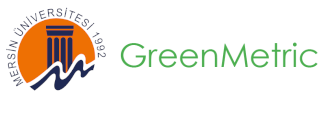Greenhouse Gas Emission
[2] Energy and Climate Change (EC)
[2.10] Greenhouse gas emission reduction program
| Charge parking |
| Our University’s Faculty of Fine Arts and Architecture (27,285 m²) within the scope of the Energy Efficiency in Public Buildings (KABEV) Project, funded by the World Bank and implemented by the General Directorate of Construction Affairs (YİGM) of the Ministry of Environment, Urbanization and Climate Change, with the support of the Ministry of Energy and Natural Resources (ETKB), Three buildings were selected: Faculty of Medicine, Faculty of Basic Sciences (27,481 m²), Faculty of Medicine Research and Application Hospital (96,000 m²), and the project costing approximately 400,000,000.00 TL was started.Within the scope of the project, the automation system of the Research and Application Hospital will be renewed, heat pumps will be installed, the lighting system will be converted to LED fixtures, the automation system of the Faculty of Basic Sciences4 will be renewed and a solar power plant producing electricity with a capacity of 2.75 megawatts will be installed in the region. As a result of all these improvements, a monthly savings of 7,000,000 TL will be achieved. It is envisaged to be. Within the scope of the project, the heating system of the Faculty of Architecture and Fine Arts will be converted from a chiller and liquid fuel boiler system to a Central Heating and Cooling System (VRF), a solar power plant producing electricity with a capacity of 170 KW will be installed in the region where heater and cooling batteries will be added to the air conditioning plants, and as a result of all these improvements, a monthly It is anticipated that 1,000,000 TL will be saved. |
| Energy Efficiency in Public Buildings (KABEV) |
Description:
(Please describe the elements of green building implementation on your campus. The following is an example of the description. You can describe more related items if needed.)
- Charging parking for private vehicle to reduce vehicle in campus
- Energy Efficiency in Public Buildings (KABEV)
Additional evidence link (i.e., for videos, more images, or other files that are not included in this file):
- https://carleton.ca/sustainability/campus/sustainable-transportation/carpool/
